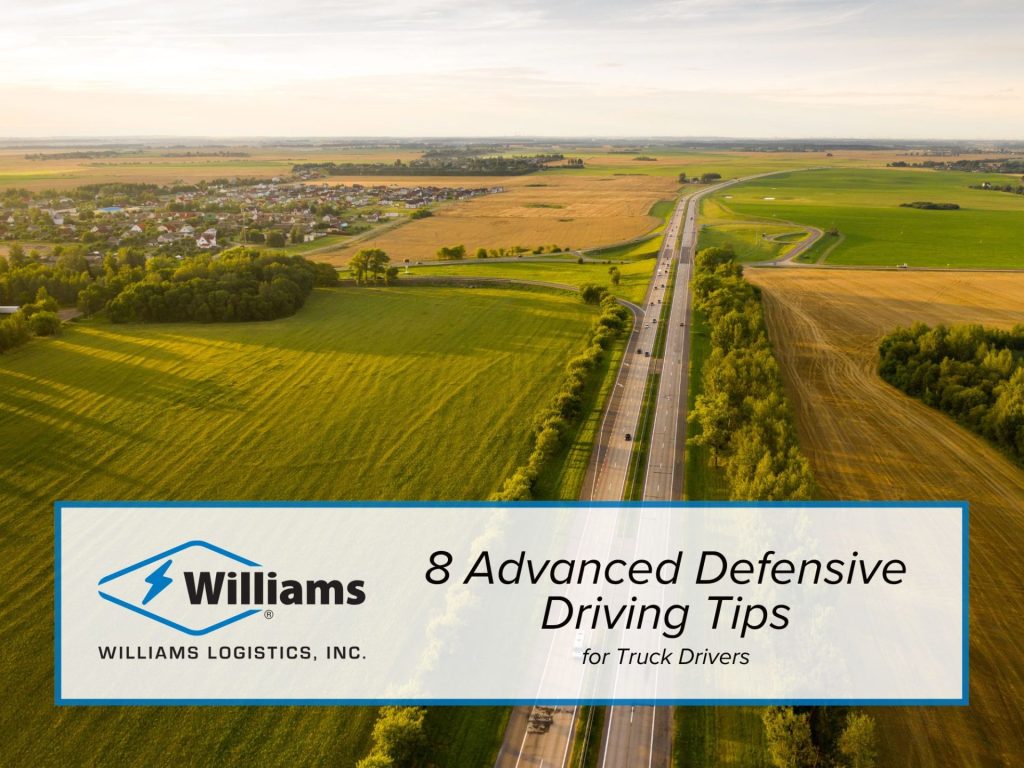Defensive driving is more than just a set of techniques—it’s a mindset and a commitment to safety that every professional truck driver should embrace. At Williams Logistics, we know that the size and power of a semi truck demand heightened awareness and skill. Driving defensively means anticipating hazards, preparing for the unexpected, and always making safety the top priority. Here’s how you can elevate your defensive driving game and why it matters for every mile you travel.
What Does Driving Defensively Mean?
Driving defensively means operating your vehicle in a way that prevents crashes, even when others make mistakes or conditions are less than ideal. It’s about expecting the unexpected, staying alert, and using every reasonable precaution to avoid incidents. Defensive drivers assume that other road users may make errors and adjust their actions accordingly to keep everyone safe.
You Are Driving Defensively When You…
1. Look Farther Ahead
Professional truck drivers should always scan well beyond the vehicle directly in front of them. On highways, look at least a quarter mile ahead to spot potential hazards early. This gives you more time to react to changing traffic conditions, obstacles, or sudden stops.
2. Maintain a Safe Cushion
Keep a buffer zone around your truck. For commercial vehicles, the DOT recommends at least four seconds of following distance at speeds up to 40 mph, adding one second for every additional 10 mph. This space allows you to stop safely if traffic suddenly slows or stops.
3. Leave Yourself an Out
Always have an escape route in mind. Whether it’s a shoulder, an empty lane, or a safe area to pull over, knowing your options can make all the difference in an emergency. Don’t box yourself in between other vehicles or barriers.
4. Communicate Clearly
Use turn signals well in advance, and lightly tap your brakes before stopping to alert drivers behind you. Defensive driving relies on clear communication to minimize confusion and prevent accidents.
5. Adjust Speed for Conditions
Don’t just follow the posted speed limit—adjust your speed based on weather, visibility, traffic, and your truck’s load. Slower speeds in poor conditions give you more control and reduce stopping distances.
6. Avoid Distractions and Stay Focused
Stay alert and avoid distractions such as mobile devices, eating, or adjusting controls while driving. Fatigue is another major risk—plan rest breaks and never drive when drowsy.
7. Plan Ahead and Be Prepared
Know your route, anticipate high-traffic areas, and be ready for bad weather or road closures. Keep a “survival kit” in your cab for emergencies, and always check your truck before each trip to ensure it’s in top condition.
8. Watch for Blind Spots
Regularly check your mirrors and be aware of your truck’s blind spots. Avoid lingering in other vehicles’ blind spots, and be extra cautious when changing lanes or merging.
Advanced Defensive Driving Training for Truck Drivers
Investing in professional defensive driving training is one of the best ways to sharpen your skills. Leading programs can offer hands-on, scenario-based learning tailored to the unique challenges faced by truckers. Furthermore, certification from a reputable defensive driving course not only enhances your safety but can also improve your driving record and job prospects.
Why Defensive Driving Matters
For truck drivers, defensive driving is about more than personal safety—it’s about protecting your cargo, your company’s reputation, and the lives of everyone on the road. By adopting advanced defensive driving habits, you reduce the risk of accidents, minimize downtime, and contribute to a safer trucking industry.
At Williams Logistics, we encourage every driver to make defensive driving second nature. Stay alert, stay prepared, and always drive with safety in mind. Your commitment to defensive driving is the key to a long, successful, and accident-free career behind the wheel.
